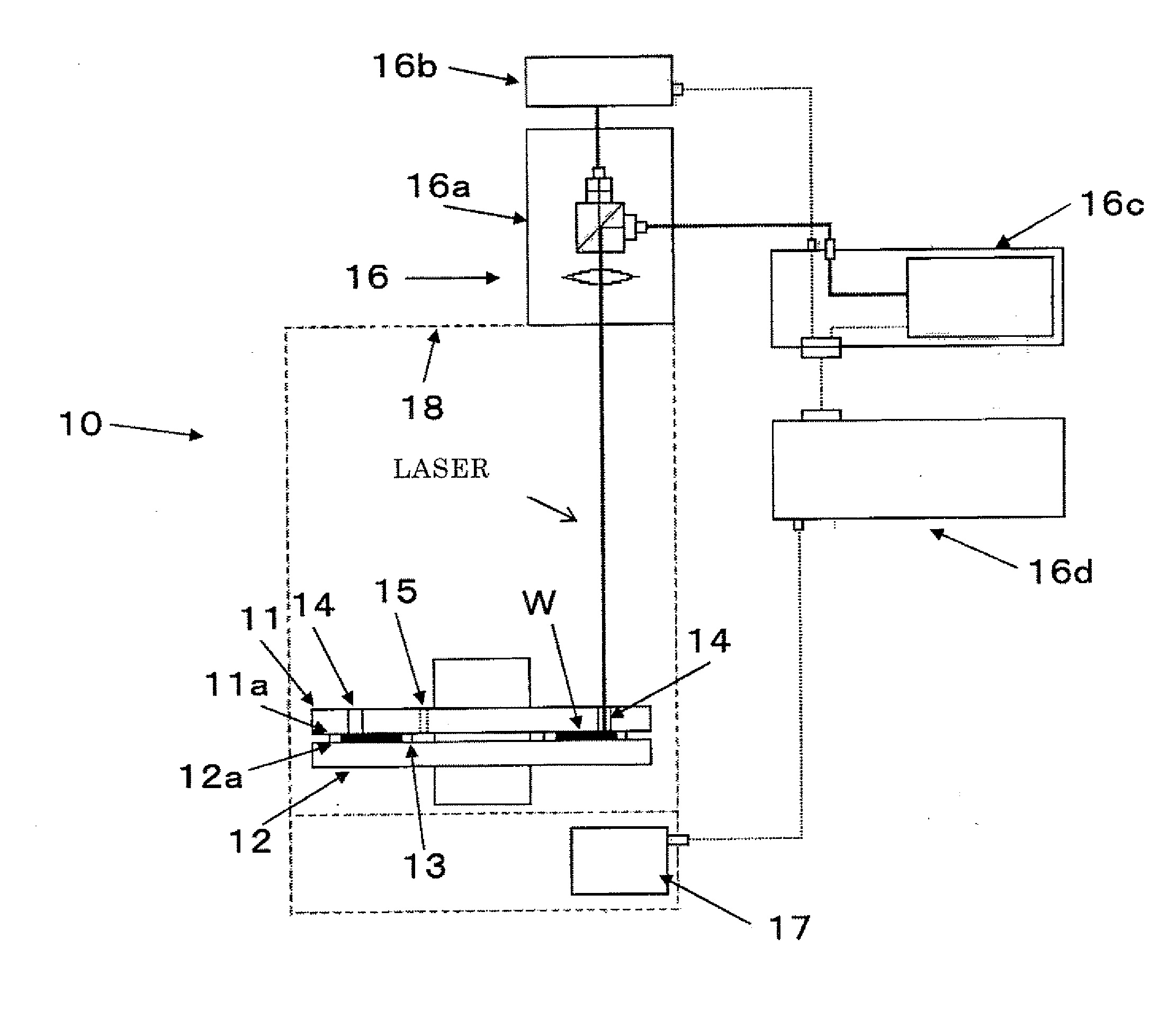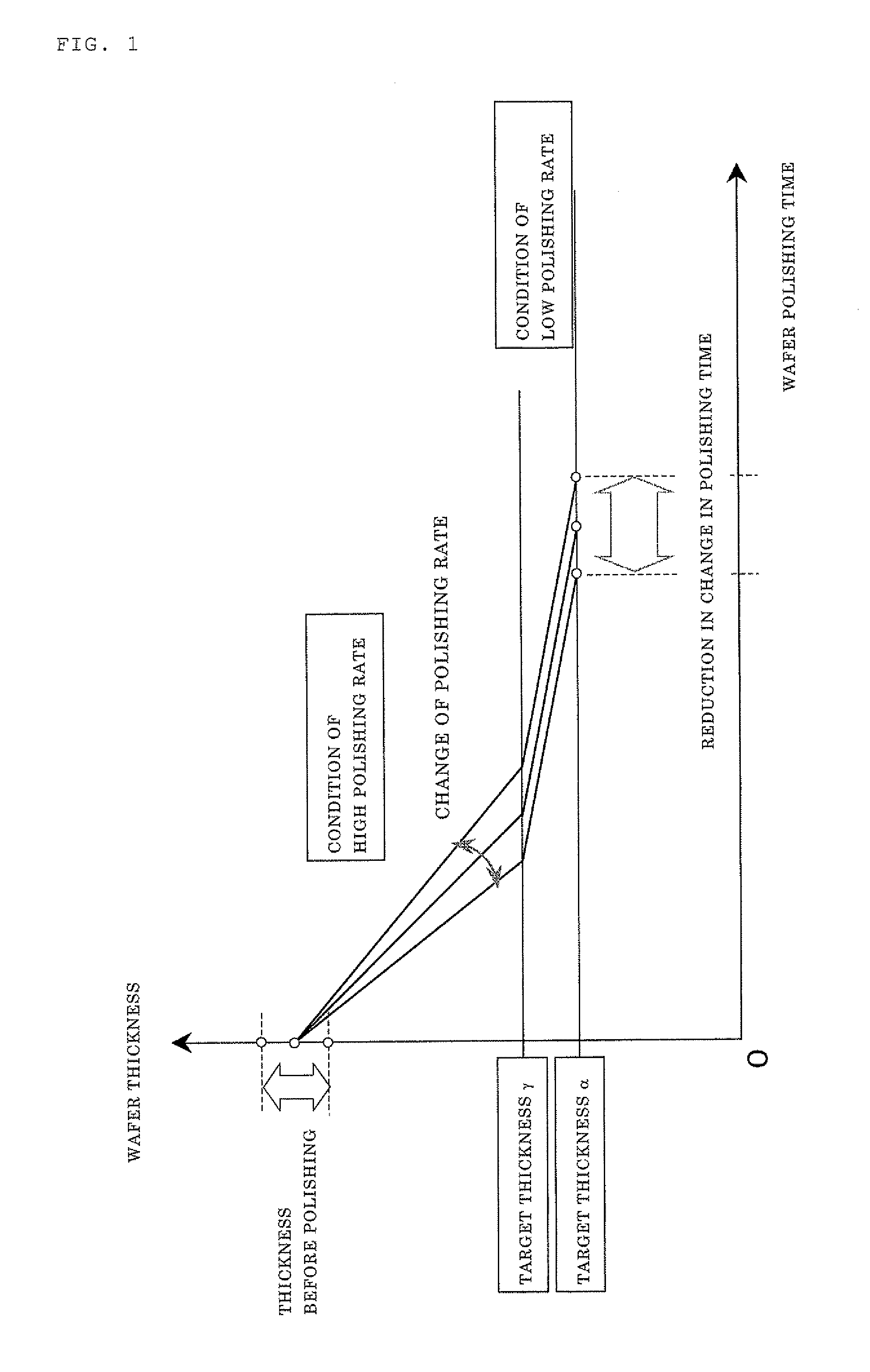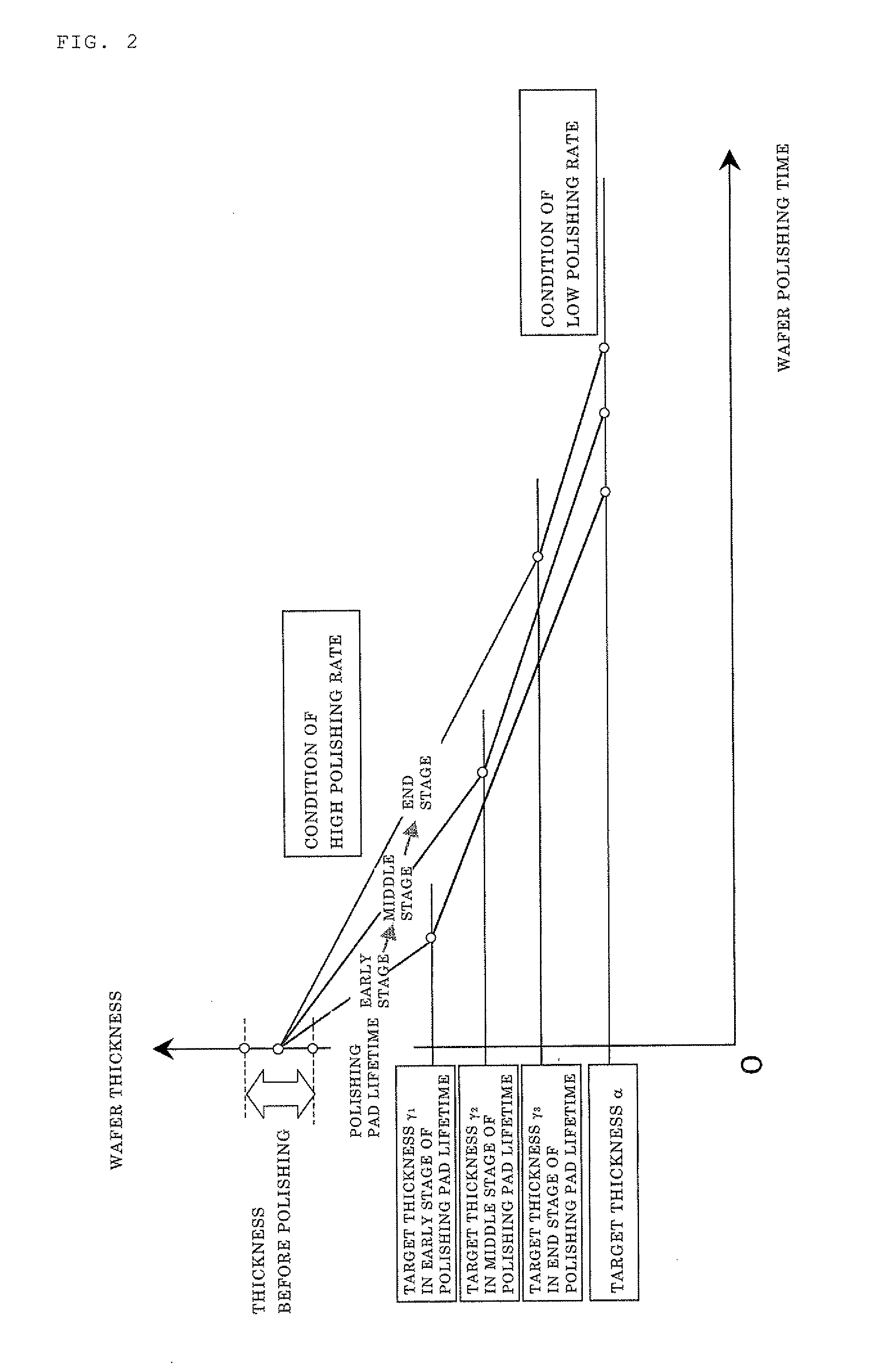Wafer polishing method and double-side polishing apparatus
a polishing method and polishing technology, applied in the direction of manufacturing tools, semiconductor/solid-state device testing/measurement, lapping machines, etc., can solve the problems of failure in the shape of the wafer, thereby occurring, and productivity decline, etc., to achieve high flatness, high precision, and easy to obtain
- Summary
- Abstract
- Description
- Claims
- Application Information
AI Technical Summary
Benefits of technology
Problems solved by technology
Method used
Image
Examples
example 1
[0165]A wafer was polished according to the wafer polishing method as shown in FIG. 1.
[0166]As the wafer to be polished, there were prepared 720 silicon single wafers having a diameter of 300 mm and p−-type obtained by slicing, with a wire saw, an ingot grown by the CZ method. This p−-type wafer means a p-type wafer having a high resistivity. The wafers were subjected to chamfering, rapping, and etching in a normal condition.
[0167]With the double-side polishing apparatus as shown in FIG. 7, 240 wafers of the prepared silicon single wafers were double-side polished in a batch-wise manner (15 wafers in one batch). As the polishing pad, MH-S15A of Nitta haas was used. As the polishing slurry before the switching, Fujimi FGL11022 (for the high rate polishing) was used, and as the polishing slurry after the switching, Fujimi FGL2100 (for the low rate polishing) was used. It is to be noted that an attempt to keep the thicknesses of all polished wafers constant was made.
[0168]In this case,...
example 2
[0180]The double-side polishing apparatus as shown in FIG. 7 was used to polish the wafers in a batch-wise manner (15 wafers in one batch). In this case, the target thickness of each of the polished wafers was 777 μm.
[0181]As the wafer to be polished, there were prepared 600 silicon single wafers having a diameter of 300 mm and p−-type obtained by slicing, with a wire saw, an ingot grown by the CZ method. The wafers were subjected to chamfering, lapping, and etching. This p−-type wafer means a p-type wafer having a high resistivity.
[0182]There was prepared the wafer-thickness-measuring mechanism provided with the optical unit using the apparatus of a wavelength-variable-infrared laser, the apparatus which can tune the wavelength of the laser to 1575 to 1775 nm. With this wafer-thickness-measuring mechanism, 300 wafers of 600 wafers were polished while measuring the thickness of the wafer, and the thickness of each of the polished wafers was evaluated by AFS (a capacitance flatness-m...
example 3
[0188]The double-side polishing apparatus as shown in FIG. 10 was prepared.
[0189]First, 15 openings having a diameter of 20 mm were provided on the circumference of a circle where the center of the upper turn table is a fulcrum, as the plurality of openings. The polishing pad (polishing pad MH made by Nitta Naas co., a thickness of 1500 μm) having the holes having a diameter of 20 mm larger than that of an outer circumferential portion of each of the openings (a diameter of 40 mm) was prepared. The same number of the window members as the openings were also prepared, each window member in which PTS films made by toray co., (a diameter of 30 mm, a thickness of 150 μm) having a diameter of 10 mm larger than that of each of the openings provided at the turn table were cut into the shape of a circular disk, and adhesive double coated tapes (sumitomo 3M 442JS3, a thickness of 110 μm) were adhered along the outer circumference of the PTS films. The window members were adhered to portions ...
PUM
 Login to View More
Login to View More Abstract
Description
Claims
Application Information
 Login to View More
Login to View More - R&D
- Intellectual Property
- Life Sciences
- Materials
- Tech Scout
- Unparalleled Data Quality
- Higher Quality Content
- 60% Fewer Hallucinations
Browse by: Latest US Patents, China's latest patents, Technical Efficacy Thesaurus, Application Domain, Technology Topic, Popular Technical Reports.
© 2025 PatSnap. All rights reserved.Legal|Privacy policy|Modern Slavery Act Transparency Statement|Sitemap|About US| Contact US: help@patsnap.com



